1.
If the 20th century was the decade of the automobile, the 21st century is going to be the decade of the cell phone (yes, there were cell phones in the 20th century, but penetration tipped in the 21st. There were also cars in the late 19th century, but mass production didn't come around until the 20th). That's been rammed home to me here in Borneo.
When we went to Mulu park there was cell phone reception. You have to fly there as there are no roads. But you can use your phone. Similarly, the guides love to hike to the top of the mountains because inside the park they get better reception. (They did the same at Maliau Basin)
I also like that even the local taxi driver, who drives a beater of a car to the airport for $1.50 had a cell phone on his dash:
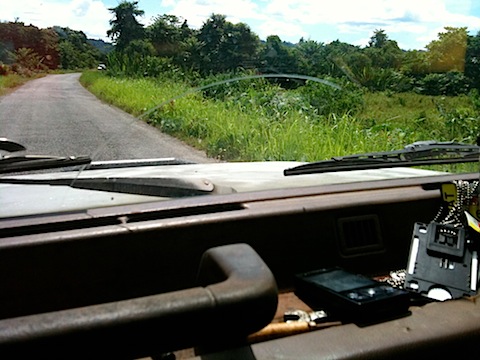
Even Mabul island - which lacks almost a single building that's not made out of wood and has maybe a few hundred residents tops - had cell phone reception. Note the tower in the image below:

Moreover, not only are these people connected, they're right on the bleeding edge of technology. Android phones are everywhere. Print ads that include an iPhone are almost as common as the billboards for those Android phones. You can check in for Malaysian Airlines via your cellphone or iPad. And you can buy all sorts of awesome wireless accessories, like the MiFi portable wifi hotspot.
People are also creating. Check out this cool app put together by a Malaysian developer:
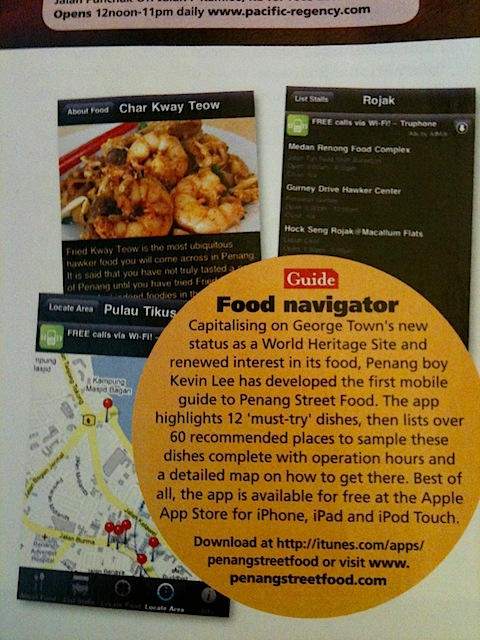
It's going to be a great century!
2.
Flying over Borneo is an amazing experience. I'm writing this (part of this) post on the plane from Kota Kinabulu to Tawau and looking at the mist filling the valleys between different jungle-covered mountains. There are also so many layers of cloud here - on the ground, bumping into mountains, soaring above your plane - that it's incredible.
It's a sensation and perspective you just can't get from the ground.
3.
Flying also gives you a great chance to see how Malaysian Airways has personalized the experience to their own tastes. I love seeing the banalities of life played out in different cultures. Here are a few gems from here:
- When you get on the plane, the greeting is "ladies and gentlemen, boys and girls and Enrich club members." Wendy commented that it's like a carnival.
- The safety announcement on MAS Wings states that "we know you love your cell phone very, very, very much..." Yup, three "very's". Similarly, you're asked "to take off your heels, even if they're very expensive" in the event of an emergency landing.
- Soft rock is played on MAS Wings flights. The soothing sounds of Michael Bolton and post-Genesis Phil Collins torment you as you long for the flight to end.
4.
And, if it's MAS Wings, you will want the flight to end. Because MAS Wings has the worst pilots of all time.
Flying with them isn't dangerous, it's just that they mastered the science but not art of flying.
As a result, you get on a plane and it is constantly accelerating and decelerating. First your stomach is rushing to your feet and then your head. Your pilot pitches you forward and back in a tug of war to see who on the plane will vomit first.
At one point flying from Mulu (I think this is the "my first route" of Malaysian pilots) the pilot managed to combine an acceleration with a change in direction at the same time resulting in all the blood in my body rushing to my head at over 1G. Amazing.
(Editor's note - our pilot must know I'm writing this as he just decided to hit the air brakes on us in solidarity with his MAS Wings brethren. He must be newly promoted).
5.
Malaysia is a muslim country, but in a much more laid back way than, say, Saudi Arabia. This is especially visible on the magazine stand. I doubt anywhere else on earth do you get such a variety of covers:

6.
Malaysians love to smoke. I'm impressed by the depth and breadth of their smoking.
They smoke before breakfast, while working, lunch, back at work again and then during and after dinner.
Nothing will get between a Malaysian man and his cigarette (and it's only men who seem to smoke). I was in the shower in the jungle and when I looked at the divider between the stalls, someone had carefully rested a cigarette butt on the top. So yes, they even smoke in the shower here.
7.
If Borneo had a national football team, it would be Manchester United. Everywhere we've gone on this island it's been Man U. Our ranger wore their shirt for three days. We stopped in a tiny restaurant on the way up to Maliau Basin and there were supporter flags on the walls. We passed cars with Man U stickers and in Semporna they were selling Man U footballs.
8.
The roads outside Tawau (in the East) are pretty bad; many aren't paved. The locals rip around in Toyota Hilux (the Taliban's favourite truck!) and have to wash them before they come into the city (it's the law: no dirty cars).
The paved roads (like the one to Semporna) have a nasty habit of washing away. It's the unintended consequence of cutting down all that rainforest to plant palms. They just don't hold the water like the old jungle.
What's the solution? Don't cut down the jungle? Build better roads with, perhaps, gravel, below them rather than just dirt? Nope, just put a warning sign and a merge sign and some paint on the road.
In fact, maybe that's symbolic of driving here in general. After taking a couple of long bus and taxi rides, I've come to appreciate that the markings on the roads are really more of a guide than a rule. Why should feel constrained to drive on the left (the British influence) when you could drive in the middle of the road or even on the right? And when you're passing, as long as you miss oncoming traffic by a second or two you probably did a good job.
9.
I've been thinking a lot about 'globalization' and 'westernization' and 'development' while here. Semporna is full of open markets but nowhere were people happier shopping than in the Giant supermarket or the Guardian drug store. Over the next ten years, these chains will almost certainly put a lot of Semporna's mom and pop stores/stall out of business.
But is that a bad thing? The locals get higher quality goods in a safer environment (do you really know where that market chicken has been?) and probably at lower prices. The chains may even be better for the environment as they're much more efficient and potentially cut out some middlemen.
So globalization in that respect raises the bar for society.
A much more challenging situation arises with the local people here. I posted earlier about the Penan. Recall that they were forest nomads; of the 10,000 of them, only 300 still live in the forest; the rest farm rice. Palm plantations mean less rainforest to roam.
The same scenario is playing out in the Sarawak highlands around Borneo. The locals (I think the Kelabit) used to live in long houses and hunt; now they're farming and their kids are moving to the cities.
Both of these cultures likely won't exist in a couple of generations (when you hear the UN talk about languages/cultures going extinct, this is where it happens).
And that's a shame. Survival of the fittest-style globalization and development is great when it comes to bringing people safe, high-quality consumer goods. It's terrible when the price is the loss of entire cultures. I want to live in the world where the Penan can hunt in the forest and have six different words for the notion of "we".
This is where the notion of "Westernization" comes in. We take for granted the notion of "progress" - that every generation should have it better than the previous. Our tool of progress is technology: more, better, faster and cheaper and we've built our entire society around it; we regularly eat our old society to produce the next one.
And when our technology runs into cultures where nothing changes generation over generation (i.e., the Penan), it steamrolls them.
This is just a rant. I don't have a solution to this (and it's definitely not forcing people like the Penan to live in the forest against their will). Maybe all we can do is document these cultures and store their memories for when we're ready to really appreciate them.
I'm sure some very smart people are working on this somewhere.
10.
Malaysians have a huge sweet tooth. You cannot buy any bread that is not coated in sugar. I thought that the Hong Kong bakeries used a lot of sugar, but here they even put sugar on top of their cheese bread.
11.
Speaking of food, here's a quick rundown on what we loved:
a) Nasi Goreng. Fried rice. The staple of the Malaysian diet. Nasi Goreng Ayam (chicken) is a personal favourite. I never was able to figure out what the Nasi Goreng Kumpang (country style) actually was.

b) Mee Goreng. Fried noodle. The ying to Nasi Goreng's yang.
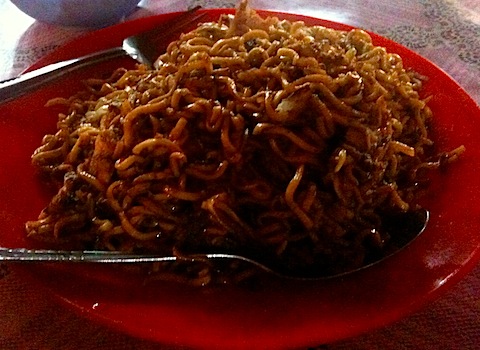
c) Roti Ayam. There is a large South Asian population here and they've brought their food with them. This particular one comes from the delightful Al-Nafisah restaurant in Semporna. It's a great place to get a tasty meal, surf the free wi-fi and watch a Bollywood flick. They also have Suntory Boss latte in a can!
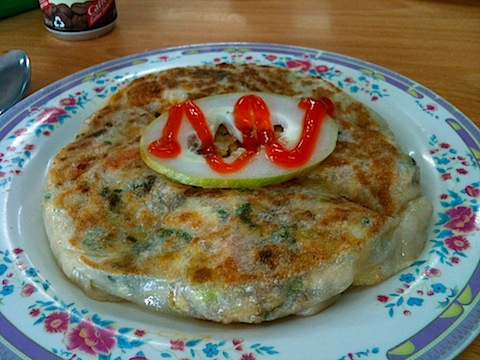
d) Tosai (aka Dosai or Dosa). More South Asian influence:

e) Tawak. This is the local rice wine and it is strong. It is also deceptively smooth so if you have more than one glass you're in for it:
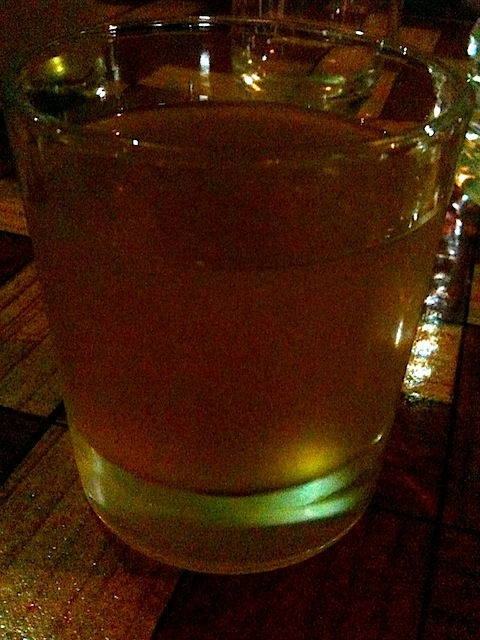
f) Kopi (Coffee). The local coffee (and make sure you ask for it or you'll get NesCafe) is delicious. It is some of the smoothest coffee I've ever tasted. The taste creeps up on you after you've finished your sip and then glides down the back of your throat.
g) The "local vegetable".
Someone must have told the Borneans that tourists want to eat local food (they were right). As a result, many restaurants offer the mysterious but ubiquitous "local vegetable". When we were in Mulu it turned out to be a sort of fern, sauteed with some garlic:

Note the fresh-squeeshed lime juice in the background. Another fantastic local treat.
h) Curry.
On the way up to Maliau Basin we stopped in a little restaurant where I had the following delicious curry (it had been cooking for hours) and a spiced hard boiled egg. Yup, it was breakfast:

The chicken curry is also fantastic:
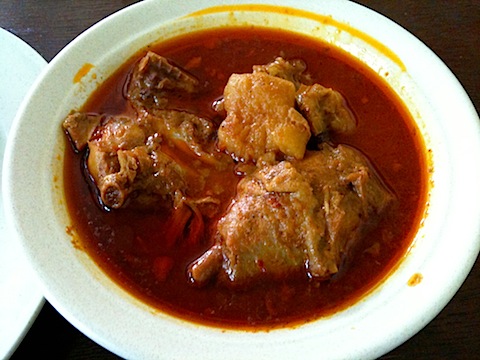
12.
The call to prayer this morning came at an ambitious 4:45am. Shockingly early. Thankfully we had to be up at 5:15 for a flight.
13.
When we were in Semporna we stayed at the Dragon Floating Inn, a hotel on stilts. Every morning sunlight would reflect off the bottom of the sea and through the cracks between the floorboards onto the ceiling. It was like a private avant garde cinema.
14.
I received some change that included two different versions of the 50 Ringgit note:

The old ones contain a picture of a palm; the new one has an oil rig. Similarly, the 10 Ringgit note has a modern train, plane and container ship. This reminds me of how the Canadian bills used to show signs of proud industrial heritage. Lumber. Petroleum. I'm getting carried away...
Given that the latest versions of Canadian notes have poems and dead politicians, I wonder if I visit Malaysia in 10 years whether I'll see the local equivalent.
15.
Let me close with one more dig at Malaysian Airlines (I know I should close on a positive note, but what the heck). It is left to the reader as an exercise to identify all the mistakes with the map below (from their inflight magazine):

(I have an eye for these things, witness this post from a few years ago)